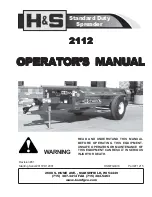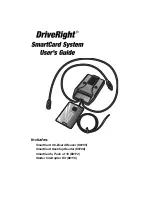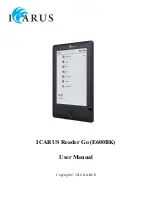
MANU-MAXIMUS-02
Maximus Reference Manual
A-5
Revision-02
Appendix A: Biometrics
Verification and Identification Modes
Verification and Identification Modes
Verification and Identification Modes are used in time & attendance. During the enrollment
process an employee’s fingerprint is scanned and converted to a mathematical code, or
template. There are no actual “fingerprints” stored anywhere, merely an arithmetic
representation of certain minutiae points.
ATS biometric devices have two modes of operation:
•
1:1 Mode (one-to-one mode) or Verification Mode
•
1:N Mode (one-to-many mode) or Identification Mode
Verification Mode
1:1 Mode is also called Verification Mode. It confirms or denies a person’s claimed identity. In
this mode the user identifies him or herself using an ID card/token or by entering a password
(PIN) at the terminal. Then the person uses the biometric reader to confirm their identity. This
process is quick since the terminal/reader recalls the template for the claimed identity and
compares it to the current scan.
When an employee presents their identity card/badge or enters their PIN at a terminal the
reader retrieves that person’s fingerscan template. The terminal then prompts the employee to
place their finger on the sensor. The reader compares that person’s fingerprint to the template
held on file and called up by the person’s ID. If the fingerprint being presented matches the
one on file for that employee then the match is accepted (good). This is called Verification
Mode. It answers the question “Am I the person I say I am?”
Identification Mode
1:N Mode is also called Identification Mode. This method confirms a person’s identity by
comparing the current fingerscan against a number of enrolled templates (N). This method
eliminates the need for ID cards/tokens or passwords/PINs but takes longer to confirm/deny
the fingerscan as the number of enrolled templates (N) increases. In addition, a 1:N template is
larger than a 1:1 template (file size).
In Identification Mode the employee simply approaches the terminal, presents their finger for
scanning, and the entire template database is searched for a matching template. Identification
Mode answers the question “Who am I?” This process is simple for the employee and relies on
the human body, specifically the fingerprint, as the credential. The company does not need to
issue credentials (badges, swipe cards, barcode cards, RFID cards), the employee does not need
to carry a card, and the back office infrastructure is less complicated. However, Identification
Mode can be a slow process if the template database is large; a problem for enterprises with
several hundred or several thousand employees. In large companies Verification Mode may
take less than 2 seconds while Identification Mode may take 8 seconds. Multiply 8 seconds by
thousands of employees lined up waiting to “punch in” and many hours are wasted.
1:1 and 1:N templates are not transferable between modes on E-Field readers (Bioscrypt).
The E-Field readers come in either 1:1 Mode or 1:N Mode. You can send templates between
E-Field readers but the template only works in the original mode (1:1 or 1:N).
NOTE:
















































